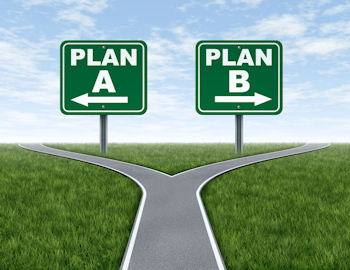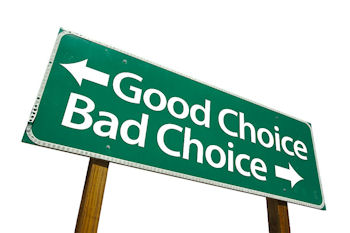Displaying items by tag: high expectations
Encourage Your Child to Make "The Choice"
 In my eighteen years as an elementary school teacher, I have learned that the number one key to student success involves setting high standards. Typically, parents and teachers are the ones who establish high expectations for children, and, of course, this act is critically important. By themselves, though, high expectations set by adults will only take us so far. The real progress begins when students make these expectations their own - when they become high personal expectations.
In my eighteen years as an elementary school teacher, I have learned that the number one key to student success involves setting high standards. Typically, parents and teachers are the ones who establish high expectations for children, and, of course, this act is critically important. By themselves, though, high expectations set by adults will only take us so far. The real progress begins when students make these expectations their own - when they become high personal expectations.
Every year I see students make significant learning gains, and without exception this progress is due to the fact that the kids decided that they wanted to do better in school and made the choice to dedicate themselves to becoming quality students. Once children make “The Choice,†a virtuous cycle begins. I describe the steps of this chain reaction below. The diagram that follows conveys these steps visually. Sharing the diagram with kids is a wonderful way to introduce the concept of developing higher personal standards, and the visual can serve as a consistent, long-term reference point that can be used both at home and in the classroom. (Please e-mail me if you'd like to receive a pdf copy of this visual.)
1) After making “The Choice,†kids immediately start working harder in school, being more diligent with their homework, and caring more about doing well academically.
2) As a result of this greater care and effort, the kids produce better, higher quality work. This may not happen right away, but it will happen eventually. Samples of this improved work offer the first tangible proof that something special is starting to occur.
3) When students begin producing better work, others will begin to notice. Teachers, parents, and classmates will provide positive feedback. More important, the kids themselves will notice, and they will give themselves positive feedback.
4) Positive feedback will increase children’s confidence. Noted educator Theodore Sizer once said that children will maximize their potential when they are motivated and confident. Positive feedback powerfully affects both of motivation and confidence.
5) The virtuous cycle continues as kids, who are now feeling more confident and believing in themselves to a greater degree than ever before, feel a deeper sense of pride and become more enthusiastic about school. Children who reach this stage are doing well, and they know they are doing well. They walk taller, participate more frequently in class discussions, and handle adversity more effectively. They strive to make the most of every learning opportunity, and they believe they can be successful at whatever their teachers put in front of them.
6) This part of the chain reaction marks a crucial step in a child’s transformation. The high expectations established initially by parents and teachers now belong to the students themselves. The kids made the choice to develop higher standards with regard to their work, effort, and behavior, and they are the now the principal owners of this choice.
7) At this point the cycle rises to a new level as children try even harder and care even more about doing well in school.
If children have not yet made “The Choice,†the best way for parents to encourage this decision is through unconditional love and support and by communicating the following idea: “I know you are capable of so much more and that you have greatness inside of you if you are willing to work a little harder and put more time and effort into your school work.†When adults consistently communicate high opinions of children’s worth, talent, and potential, kids become more likely to believe in and expect more from themselves. Children may not alter their expectations tomorrow or next week, but if they hear this message enough times, ultimately it will sink in.
Â

Tip #3: Invest in Training
This week I continue to present ideas that connect to the four beginning-of-the-year priorities introduced in Teaching Tip #1. This tip addresses the first priority: establish procedures, routines, and expectations so students know how to function efficiently and effectively in our classrooms. This type of training generally takes 4-6 weeks.
Due to the very real pressure to start teaching content standards right off the bat so that students aren’t disadvantaged come testing time, many teachers choose not to devote sufficient time and attention to these matters. Such a decision is understandable, but it’s also shortsighted. The long-term benefits of training far outweigh the short-term costs. Investing time during the beginning of the year to set our students up for success will save considerable time down the road and result in a more productive classroom environment.
Making "The Choice" Begins a Virtuous Cycle (A New Visual to Share with Your Students)
 Whenever I want to communicate an important academic or behavioral idea to my students, I try to create a visual representation of that idea. Creating a visual reference point makes the idea easier for kids to understand, and it also gives it a sense of permanence because I can review the visual, as needed, over time.
Whenever I want to communicate an important academic or behavioral idea to my students, I try to create a visual representation of that idea. Creating a visual reference point makes the idea easier for kids to understand, and it also gives it a sense of permanence because I can review the visual, as needed, over time.
The #1 Key to Student Success: Setting Higher Personal Standards (Part 4)
Over the past few weeks I have been writing about the virtuous cycle that begins once students develop higher personal standards and expect more from themselves. This virtuous cycle has been on my mind quite a bit lately, and I have started to discuss the idea more explicitly and more frequently with my students.
The #1 Key to Student Success: Setting Higher Personal Standards (Part 3)
In my two previous posts I have emphasized the importance of helping students develop higher personal standards. When kids expect more from themselves, a virtuous cycle begins in which they work harder, produce better work, and receive positive feedback about their work, effort, and attitude. As a result, their confidence and motivation grow. That leads, in turn, to even better effort, and the chain reaction progresses to a higher level.
The #1 Key to Student Success: Setting Higher Personal Standards (Part 2)
Last week I wrote that students will make huge strides academically when they begin to expect more from themselves and develop higher personal standards of quality with regard to their work and their behavior. It is wonderful that schools and families talk frequently about the idea of high expectations, but significant progress will occur only when the expectations belong to the children themselves. In this post I share some ideas about how classroom teachers can encourage kids to make this important commitment.
The #1 Key to Student Success: Setting Higher Personal Standards (Part 1)
With only five weeks remaining in the 2011-2012 school year, I have begun reflecting on many aspects of the past nine months with my students. The other day I was thinking about the kids who have made large academic improvements and the factors that might best explain these gains.
Since September, a couple children stand out in terms of the magnitude of their academic progress. Both come from supportive families who value education, yet both kids started the year working below grade level in at least one subject area. Now they perform at grade level in all areas and often act as important class leaders.





